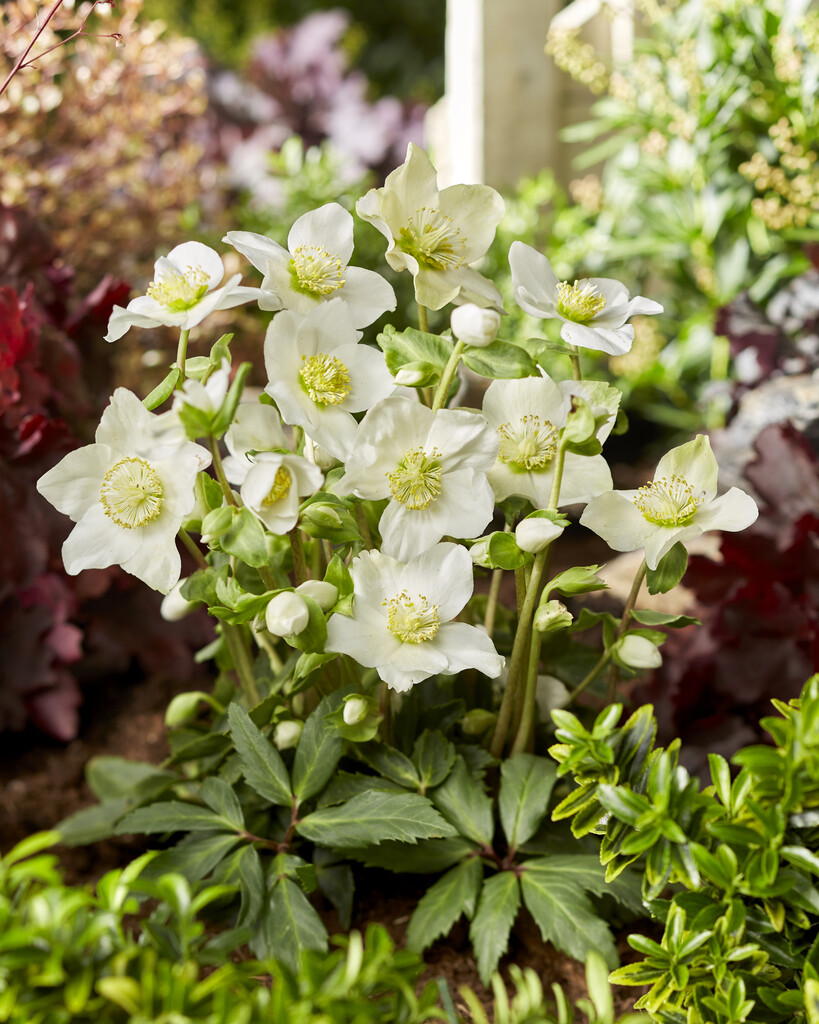Size
Ultimate height
0.1–0.5 metresTime to ultimate height
2–5 yearsUltimate spread
0.1–0.5 metresGrowing conditions
Moisture
Moist but well–drainedpH
Alkaline, NeutralColour & scent
| Stem | Flower | Foliage | Fruit | |
| Spring | White Yellow | Green | ||
|---|---|---|---|---|
| Summer | Green | |||
| Autumn | Green | |||
| Winter | White Yellow | Green |
Position
- Full sun
- Partial shade
Aspect
East–facing or North–facing or South–facing or West–facing
Exposure
Sheltered Hardiness
H7Botanical details
- Family
- Ranunculaceae
- Native to GB / Ireland
- No
- Foliage
- Evergreen or Semi evergreen
- Habit
- Bushy, Clump forming
- Potentially harmful
- Harmful if eaten, skin irritant. Wear gloves and other protective equipment when handling. Pets: Harmful if eaten, skin irritant. For further information and contact numbers regarding pets, see the HTA guide to potentially harmful plants
- Genus
Helleborus can be rhizomatous, herbaceous or semi-evergreen perennials forming a clump of pedate basal leaves, or evergreen with erect, leafy stems. Large, bowl-shaped flowers are borne in loose clusters in late winter or spring
- Name status
Accepted
How to grow
Cultivation
Thrives in neutral to alkaline soils that are moist, fertile and humus-rich. Partial shade is ideal but can tolerate full sun. Provide shelter from strong, cold winds. Mulch annually in autumn. See hellebore cultivation for more details
Propagation
Propagate by division of large clumps in early spring, watering well until they are established
Suggested planting locations and garden types
- City and courtyard gardens
- Coastal
- Cottage and informal garden
- Rock garden
- Cut flowers
- Flower borders and beds
- Underplanting of roses and shrubs
Pruning
Remove old leaves to help prevent hellebore leaf spot, and deadhead to encourage more flowers
Pests
May be susceptible to hellebore aphid, hellebore leaf miner and snails
Diseases
May be susceptible to hellebore black death, hellebore leaf spot, downy mildews, grey moulds (botrytis), smuts, and virus diseases
Get involved
The RHS is the UK’s gardening charity, helping people and plants to grow - nurturing a healthier, happier world, one person and one plant at a time.
